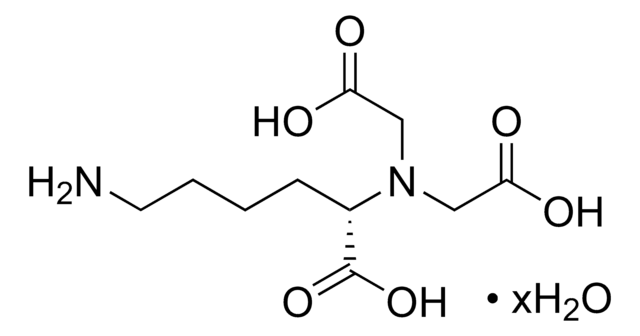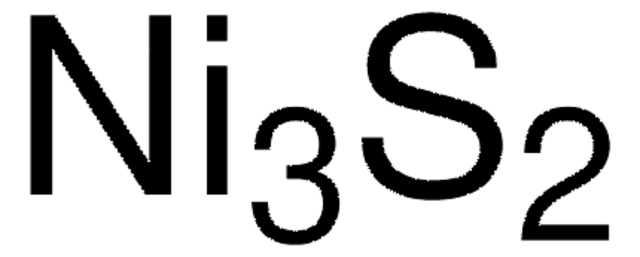656895
Nickel(II) sulfate
anhydrous, 99.99% trace metals basis
Synonym(s):
Nickel(2+) sulfate, Nickelous sulfate
About This Item
Recommended Products
grade
anhydrous
Quality Level
Assay
99.99% trace metals basis
form
solid
impurities
≤150.0 ppm Trace Metal Analysis
application(s)
battery manufacturing
SMILES string
[Ni++].[O-]S([O-])(=O)=O
InChI
1S/Ni.H2O4S/c;1-5(2,3)4/h;(H2,1,2,3,4)/q+2;/p-2
InChI key
LGQLOGILCSXPEA-UHFFFAOYSA-L
General description
Properties of NiSO4:
- Highly soluble in water
- It can participate in redox reactions
- It can form complexes with various ligands
Application
- Nickel-based electrocatalysts for oxygen evolution.
- Ni-doped titanium dioxide nanoparticles for the photocatalytic degradation of organic pollutants such as methyl orange.
- Spherical silica particles coated with Ni, which find application in the field of ceramic industry and in catalysis.
accessory
Signal Word
Danger
Hazard Statements
Precautionary Statements
Hazard Classifications
Acute Tox. 4 Inhalation - Acute Tox. 4 Oral - Aquatic Chronic 1 - Carc. 1A Inhalation - Muta. 2 - Repr. 1B - Resp. Sens. 1 - Skin Irrit. 2 - Skin Sens. 1 - STOT RE 1 Inhalation
Target Organs
respiratory tract irritation
Storage Class Code
6.1C - Combustible acute toxic Cat.3 / toxic compounds or compounds which causing chronic effects
WGK
WGK 3
Flash Point(F)
Not applicable
Flash Point(C)
Not applicable
Personal Protective Equipment
Choose from one of the most recent versions:
Already Own This Product?
Find documentation for the products that you have recently purchased in the Document Library.
Customers Also Viewed
Articles
In many technologies, performance requirements drive device dimensions below the scale of electron mean free paths (λe). This trend has increased scientific interest and technological importance of electrical resistivities at the nanoscale.
Lithium-Ion Battery Performance: Dependence on Material Synthesis and Post‑Treatment Methods
Plasmonic nanoparticles have unique optical properties that can be tailored to suit a variety of applications in the biotechnology1–8 and electronics9–16 industries.
Our team of scientists has experience in all areas of research including Life Science, Material Science, Chemical Synthesis, Chromatography, Analytical and many others.
Contact Technical Service













